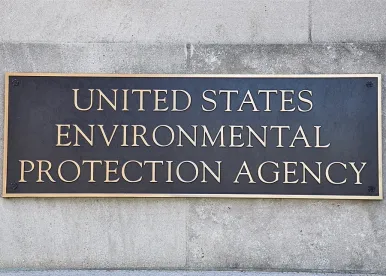On May 22-23, 2018, the U.S. Environmental Protection Agency (EPA) hosted a Polyfluoroalkyl Substances (PFAS) National Leadership Summit (Summit) in Washington, D.C. The Summit convened federal and state regulators, including representatives from EPA’s Office of Water (OW), EPA’s Office of Chemical Safety and Pollution Prevention (OCSPP), the U.S. Food and Drug Administration (FDA), the U.S. Department of Defense (DOD), a small group of invited industry participants, and representative from the environmental non-governmental organization (NGO) community. The goals of the Summit were:
- To share information on efforts to characterize risks from PFAS and to develop monitoring and remediation technologies/techniques;
- To identify near-term actions to address current state and local challenges; and
- To develop risk communication strategies to address public concerns and questions surrounding PFAS.
EPA broadcast the opening remarks and perspectives delivered by EPA Administrator Pruitt; Peter Grevatt, Director of the Office of Ground Water and Drinking Water; Jeff Morris, Director of the Office of Pollution Prevention and Toxics (OPPT); Craig Butler, Direct of the Ohio Environmental Protection Agency and Chair of the Environmental Council of the States (ECOS) Water Committee; and Jessica Bowman, Senior Director of Global Fluoro-Chemistry, at the American Chemistry Council. During his remarks, Pruitt announced that EPA will soon classify two fluorochemicals, perfluorooctanoic acid (PFOA) and perfluoroctane sulfonate (PFOS), as hazardous substances, and that EPA will begin to development maximum contaminant levels (MCL) for PFOA and PFOS under the Safe Drinking Water Act. PFOA and PFOS are largely legacy chemicals that were the subject of voluntary phase out by chemical manufacturers. The presence of PFOA and PFOS at former manufacturing sites and detections in groundwater and drinking water have raised public health concerns and made headlines over the last several months, particularly in Northeast states.
Butler’s remarks highlighted the key questions that ECOS and state participants hoped to have addressed by EPA over the course of the Summit, including any plans for MCL development, guidance on contaminated site remediation and PFAS analytical methods, and EPA’s plan to address data and knowledge gaps about PFOA and PFOS, as well as the alternative short-chain PFAS chemistry that makes up the majority of current and new uses of PFAS. States are eager for direction and assistance from EPA on standard-setting and, in the absence of federal standards, some states have begun to set their own standards. A copy of the ECOS statement is available here.
Grevatt shared plans for further co-regulator discussions and community engagement as part of an EPA “roadshow” beginning in late June in Portsmouth, New Hampshire. Morris provided an overview of the rigors of the pre-market review process under the Toxic Substances Control Act (TSCA) and OPPT’s ongoing work to better understand the diverse range of PFAS in the marketplace.
EPA intended for the Summit to serve as a formal launch of an ongoing dialogue with states, the public, and industry on PFAS, and more details will likely be shared in the coming weeks and months. A recording of the May 22, 2018, broadcast is available on EPA’s YouTube channel. Copies of the slide presentations from the Summit are available on EPA’s PFAS Summit website.


 />i
/>i

